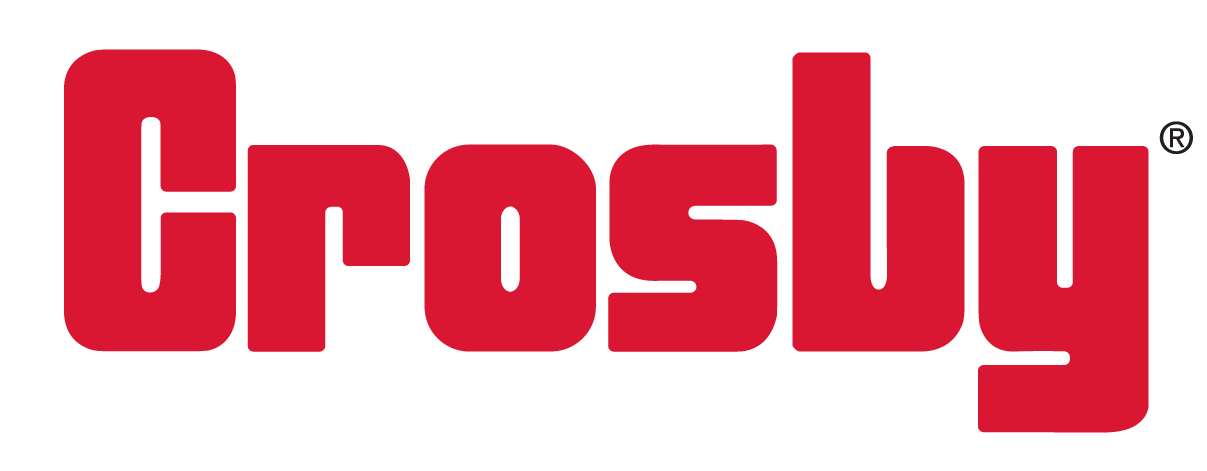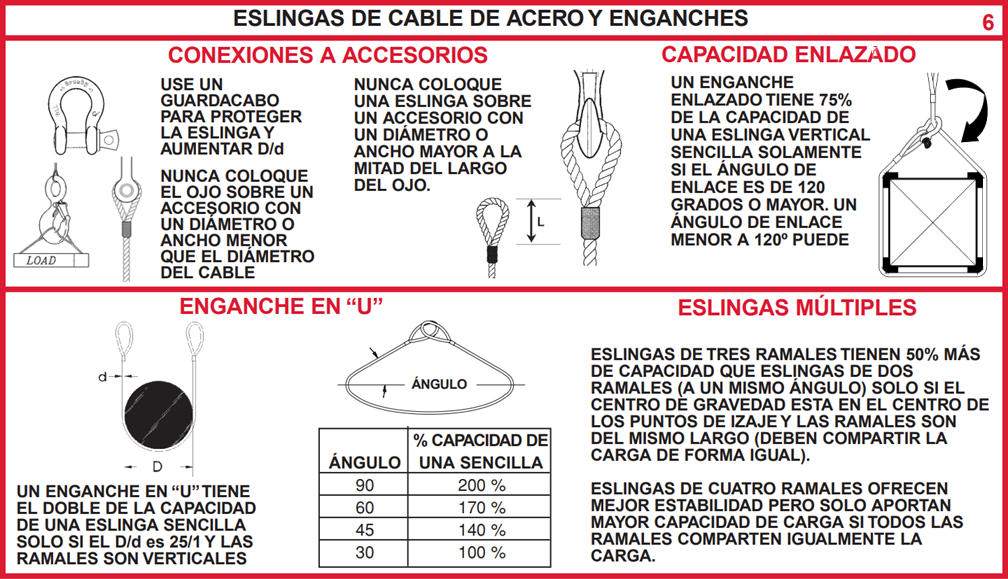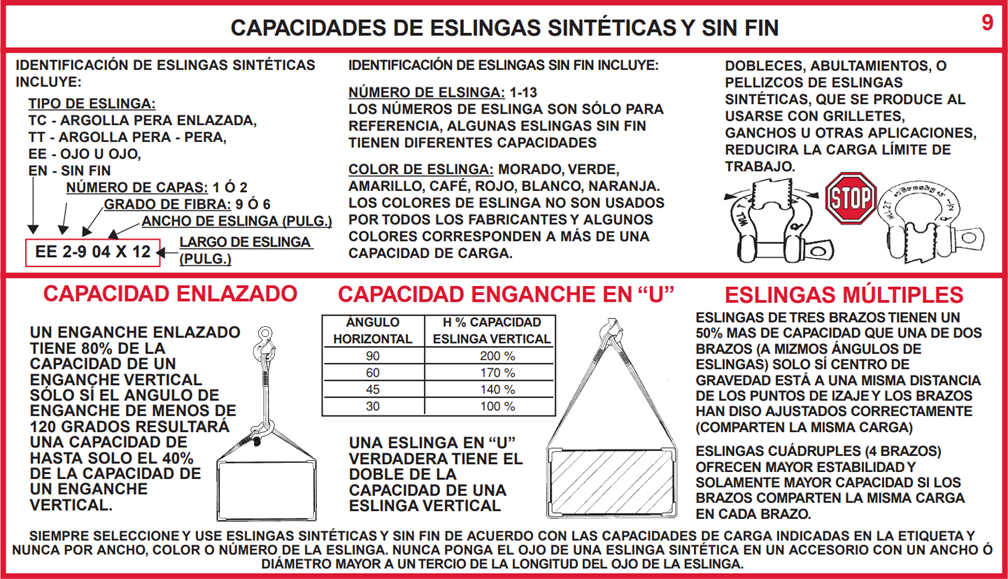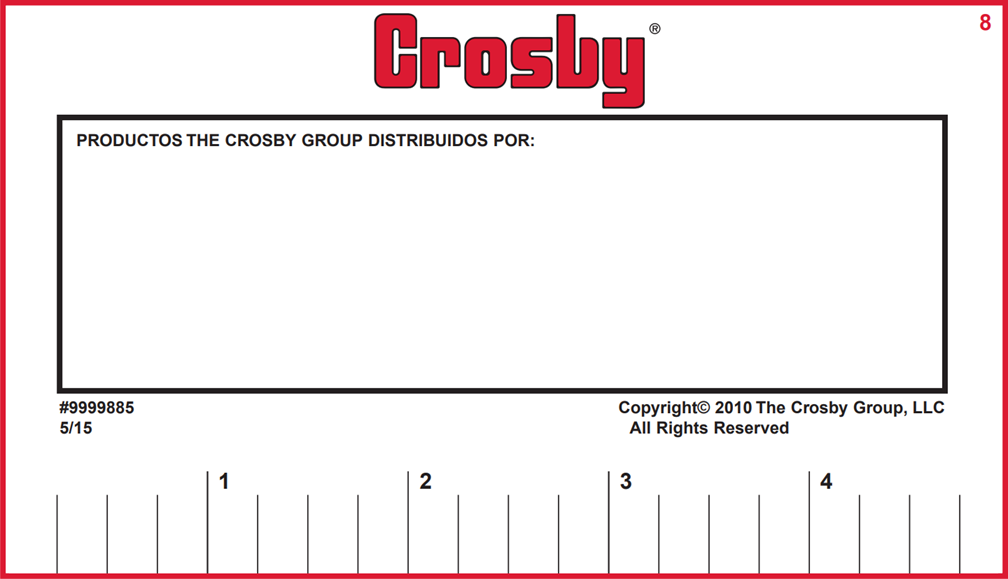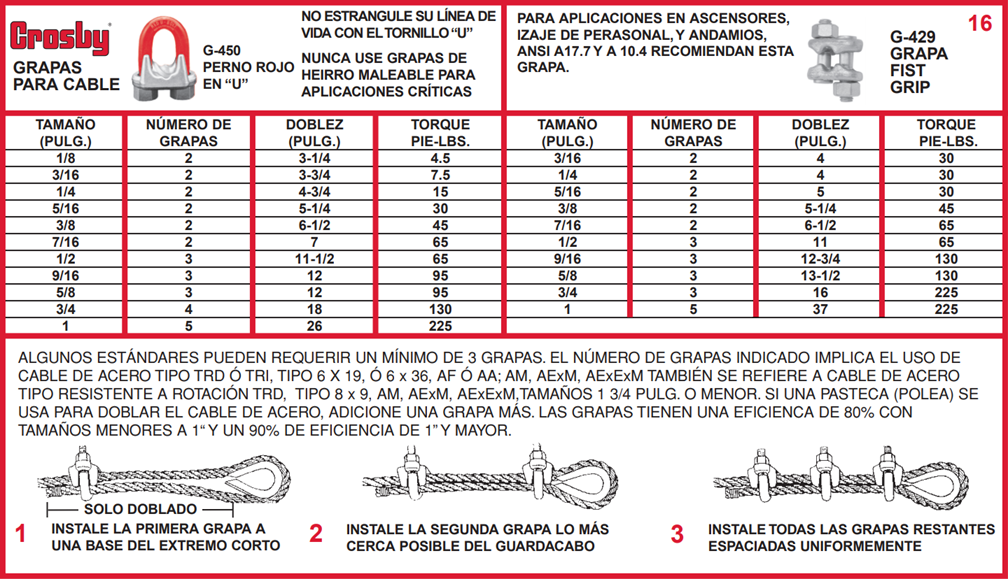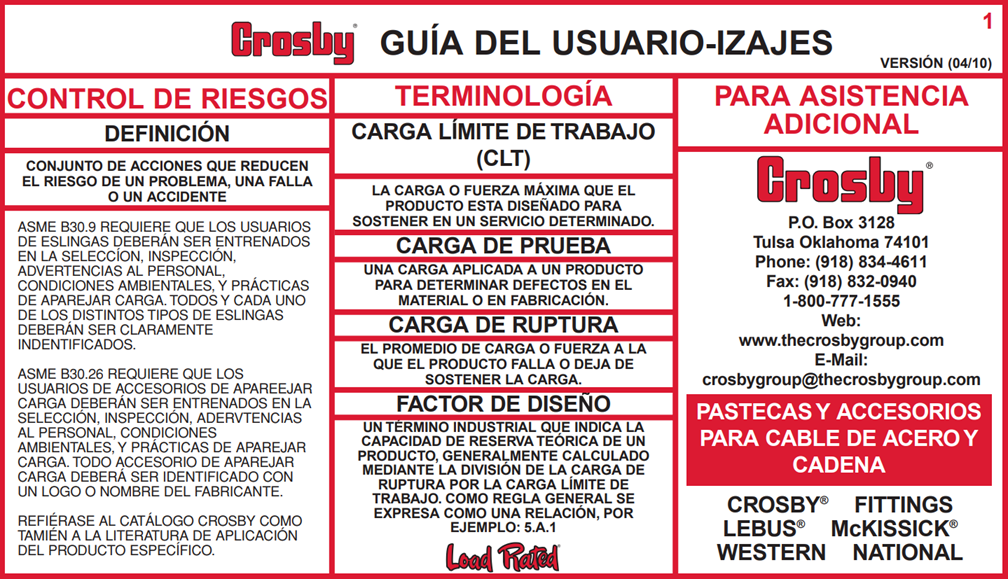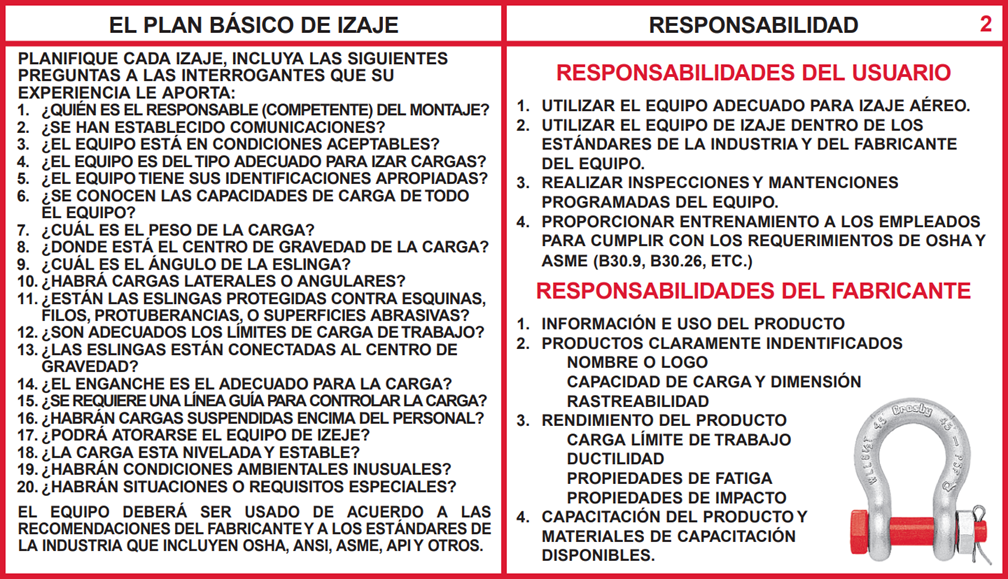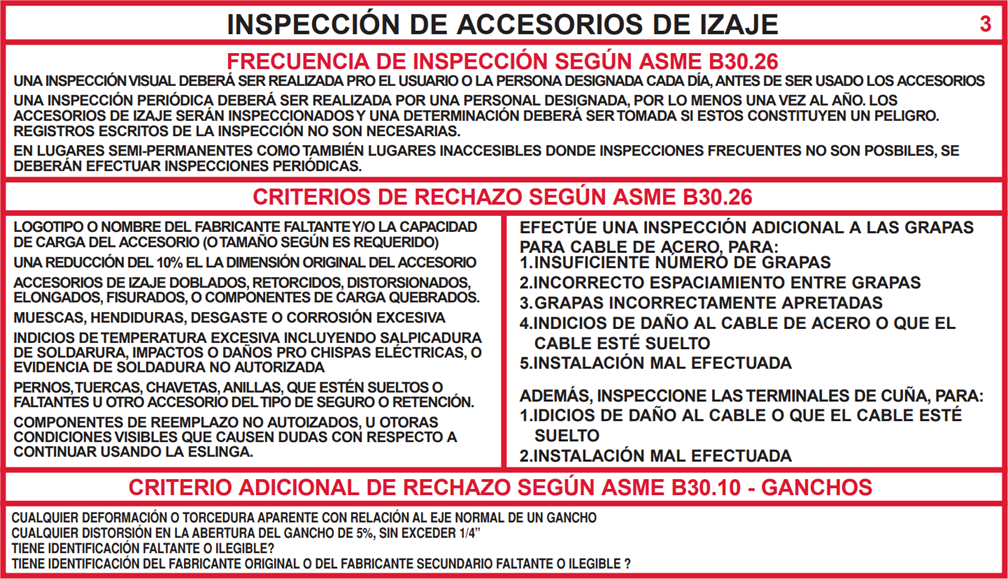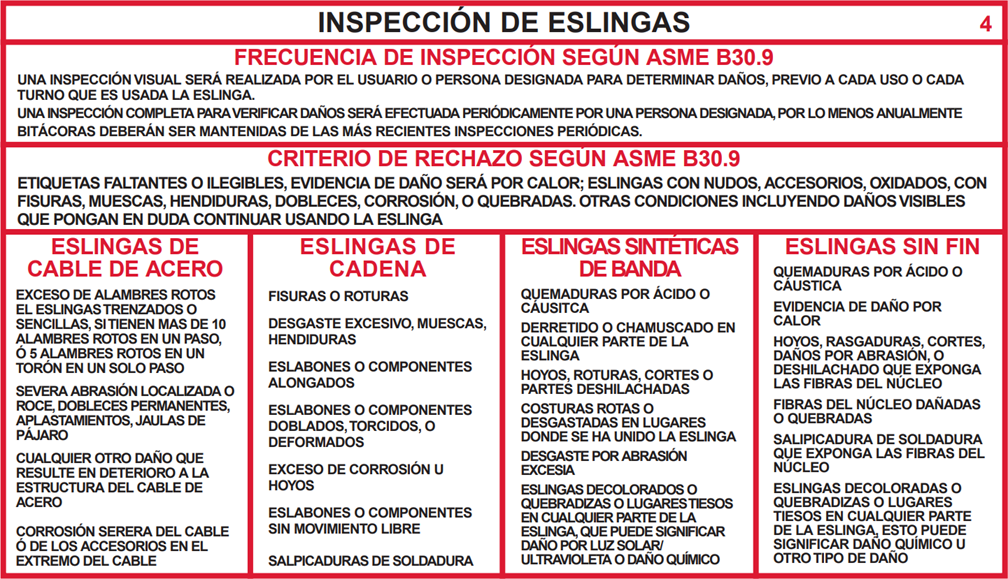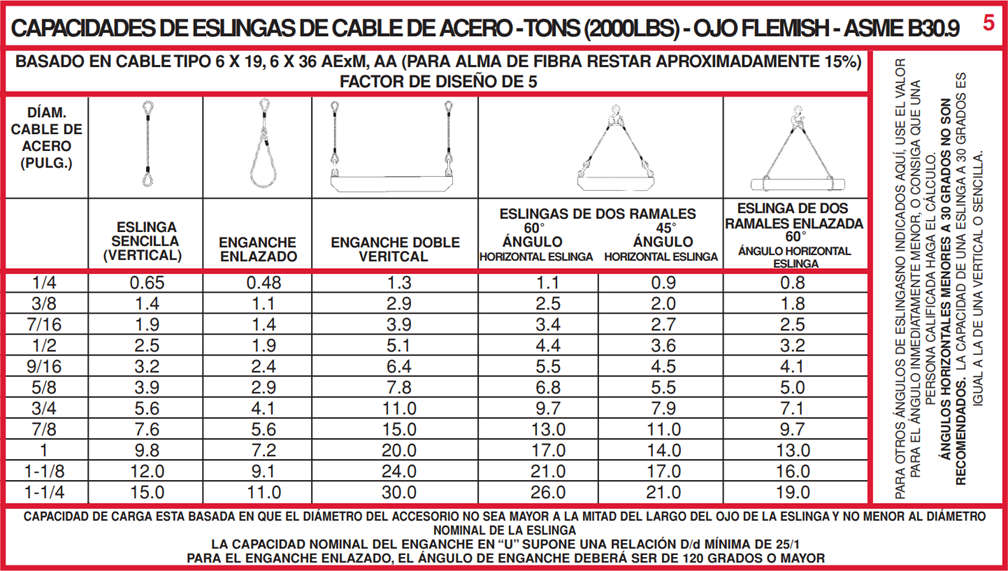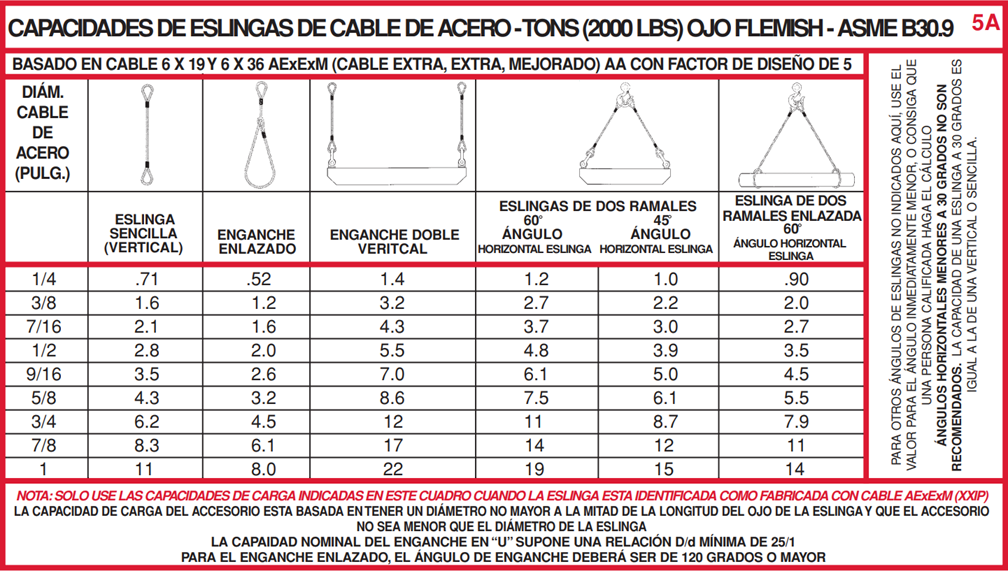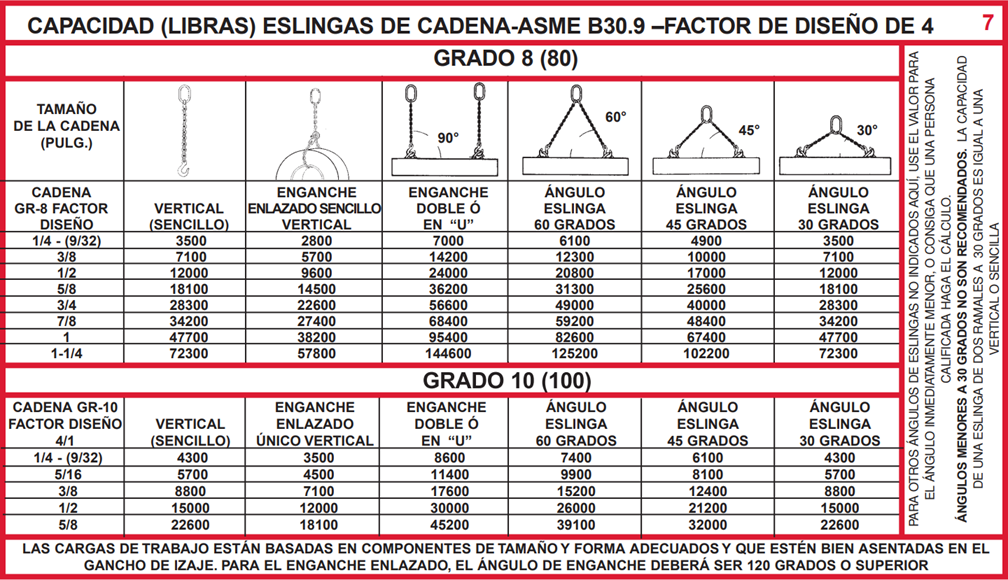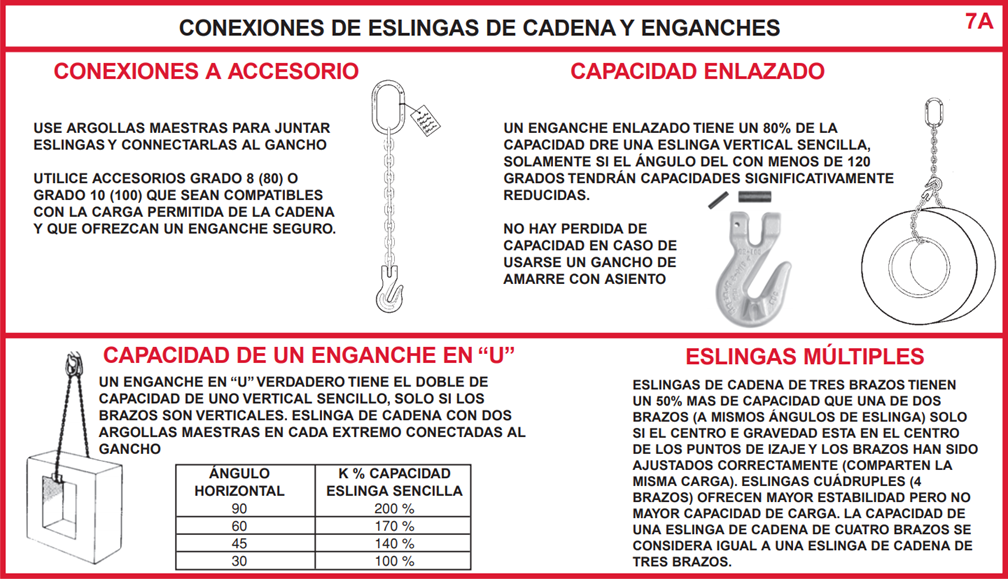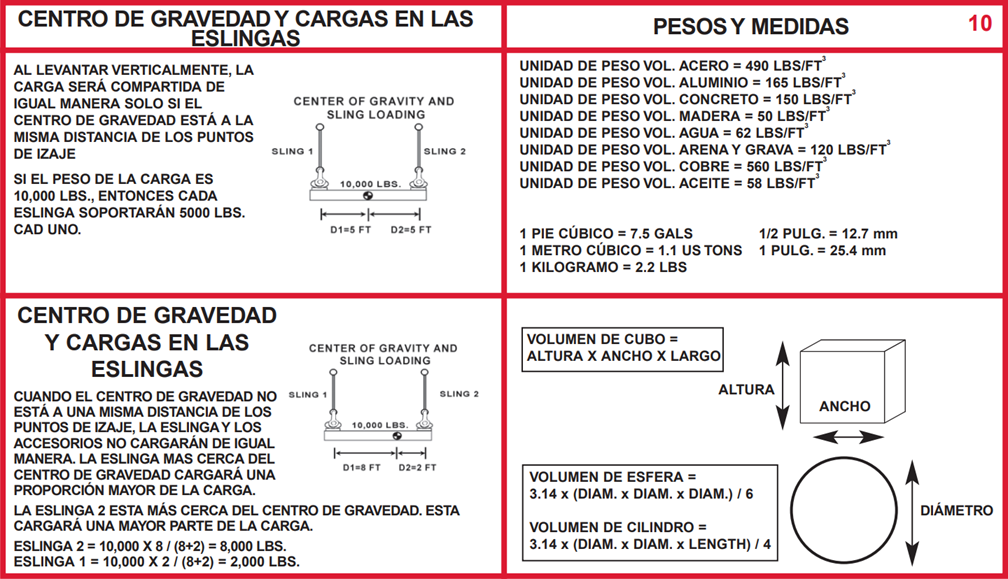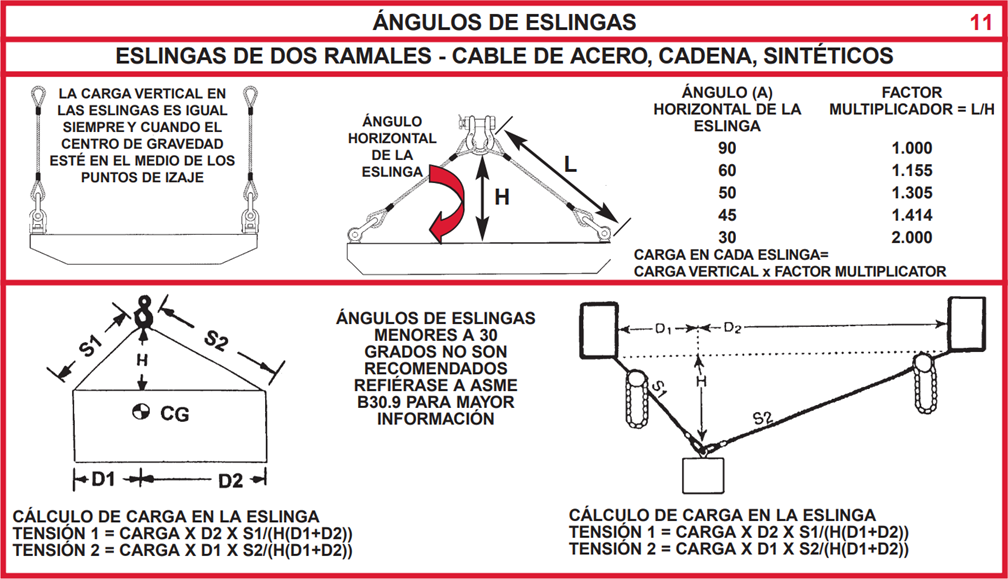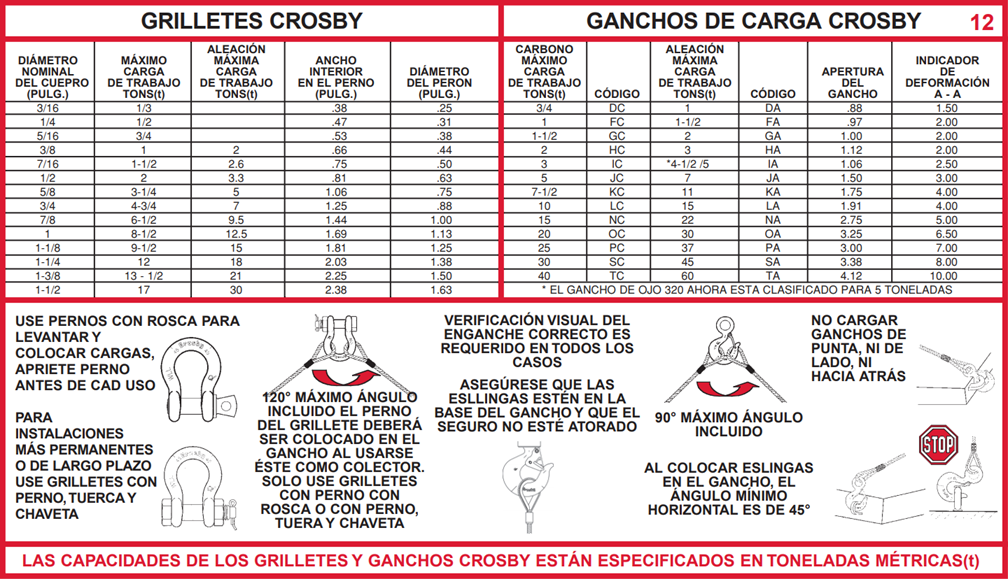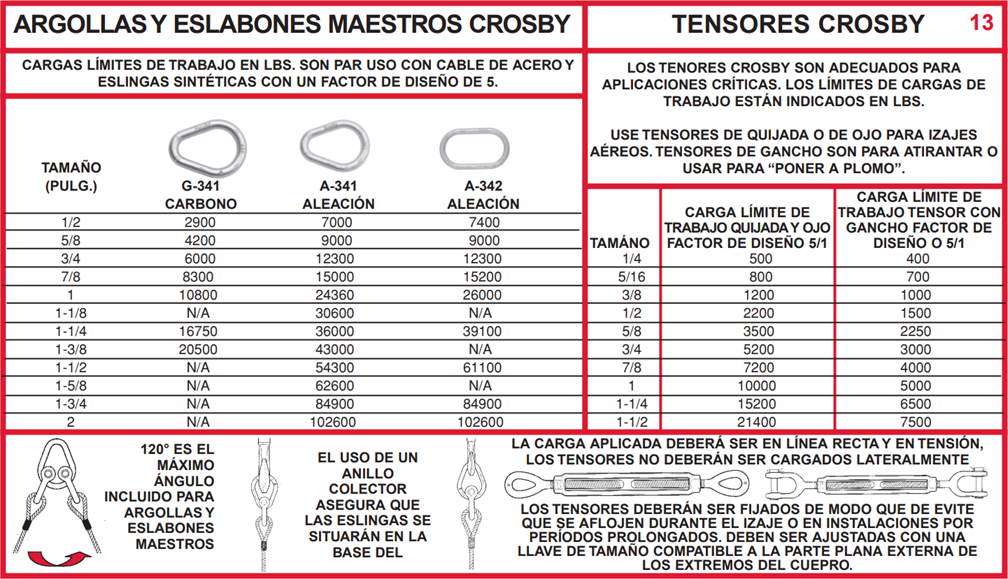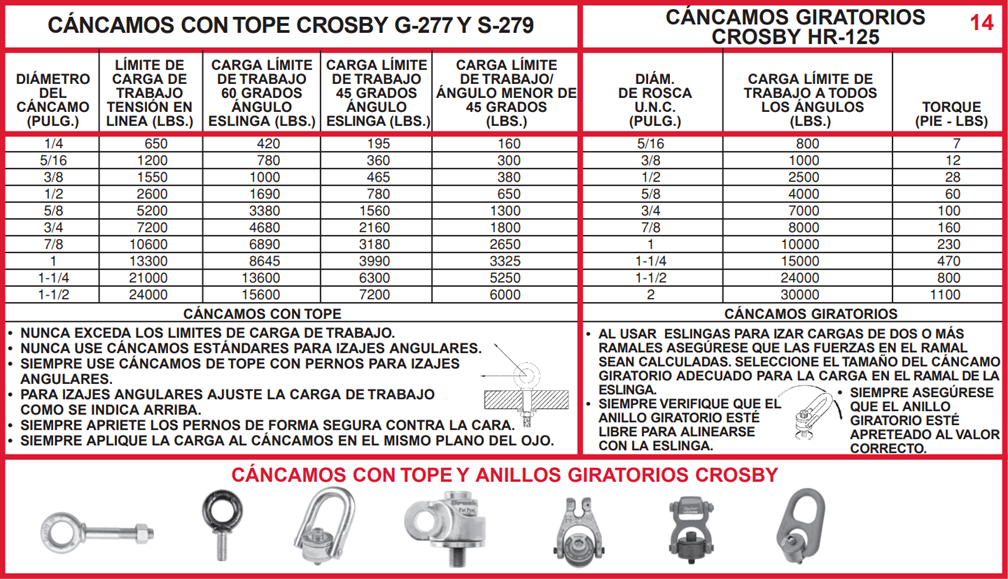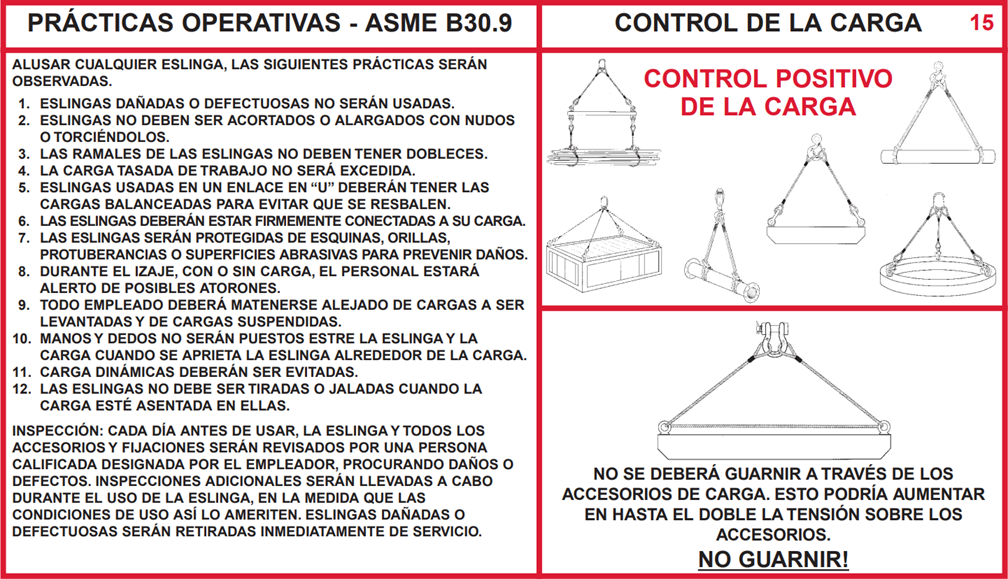Frequently Asked Questions
Below are frequently asked questions that may help answer an inquiry you may have. Please call our customer service department at 1-800-772-1500 if you need additional assistance.
Where can I find more information about Prop 65?
The latest information can be found here.
Does Crosby offer rigging training courses to assist companies in their training efforts to qualify riggers in their employment?
Yes. Crosby does offer a 2-day Rigging Trainer Development course at no charge to full-line Crosby distributors and end users of our products. The first day is designed for those product users who need fundamentals of rigging only. Day two is designed for trainers or individuals that need more advanced information.
Students who wish to attend day two must have attended the day one 24 hours prior. List of what successful day two attendees receive from Crosby:
- PowerPoint files provided by Crosby that can be utilized by end user trainers in their classroom training sessions for educating their employees on fundamentals of rigging while using Crosby rigging hardware in conjunction with slings.
- All day one attendees receive a certificate for attending the ‘Fundamentals of Rigging’ class and successful day two attendees receive a certificate stating that they are authorized to use Crosby training materials for 48 months from date of issue.
- Successful day two attendees also receive a certificate stating they have earned 1.9 CEUs
- Authorization to purchase Crosby classroom training materials at discounted rates for their in-house rigging training needs.
- CD ROMs for computer based rigging training sessions. Those individuals who successfully complete a Crosby CD ROM computer based training program can request a Certificate of Achievement from Crosby for documentation of education achieved.
- CD ROM with PowerPoint files for 30 – 45 minute refresher rigging training sessions.
Note: Interested parties working in manufacturing or construction environments should request the ASME/OSHA Rigging Trainer Development Schedule from Crosby. If working in Land Based Oil or Gas environments please request the Land Based Rigging Trainer Development Schedule. If working in offshore environments, please request the API Rigging Trainer Development Schedule. Seminar schedules for the two-day Rigging Trainer Development courses can be downloaded from the Crosby website: thecrosbygroup.com/training/schedule.
Crosby® supplies round pin, screw pin and bolt-type shackles. What is the proper application of each?
Round pin shackles can be used in tie down, towing, suspension or lifting applications where the load is strictly applied in-line. Screw pin shackles can be used in any application where a round pin shackle is used. In addition, screw pin shackles can be used for applications involving side-loading circumstances. Reduced working load limits are required for side-loading applications. While in service, do not allow the screw pin to be rotated by a live line, such as a choker application. Bolt-type shackles can be used in any applications where round pin or screw pin shackles are used. In addition, they are recommended for permanent or long term installations and where the load may slide on the shackle pin causing the pin to rotate.
When is a 'qualified' rigger required per the new OSHA CDAC standard?
A qualified rigger is required during the assembly/disassembly of cranes, and when employees are engaged in hooking, unhooking or guiding the load, or in initial connection of a load to a component or structure and are within the fall zone.
Definition of ‘fall zone’– the area (including but not limited to the area directly beneath the load) in which it is reasonably foreseeable that partially or completely suspended materials could fall in the event of an accident.
What training does Crosby offer?
- Crosby offers 4- and 8-hour rigging seminars at no charge for end users of our products. Certain criteria must be met.
- Crosby offers two-day Rigging Trainer Development courses at no charge in selective cities nationwide.
- Crosby provides all seminar attendees a complete set of training materials at no charge.
- Crosby offers CD ROM-based training courses.
- Beginning November 2010, all two-day seminar attendees will receive at no charge “prep” materials for the NCCCO Level I rigger exams.
- Crosby issues Certificate of Achievement to all seminar attendees. This certificate provides proof of attendance as a means to document one’s education on the subject matter provided.
- Crosby has trained more than 350,000 individuals since 1991.
- Most Crosby end user seminars are conducted by certified riggers.
Special Note: Classroom training as provided by Crosby is only one element in becoming a qualified, competent, or certified rigger. Crosby strongly encourages that seminar attendees also obtain “hands on” training and appropriate on the job experience as well.
What is required to become a certified rigger?
Normally one must pass a written and a practical hands-on exam. The organizations below administer or offer rigger certification:
NCCCO – National Commission for the Certification of Crane Operators – nccco.org
NCCER – National Center for Construction Education and Research – nccer.org
Contact ACRP (Association of Crane and Rigging Professionals) – acrp.net for other possible sources of testing
Note: Some cities, states or employers may have special requirements.
Does Crosby have a form to assist end users in proving that a rigger is 'qualified' in their employment?
Yes. Please download the Qualified Rigger Management Sign-Off Authorization Form below:
Crosby’s Qualified Rigger Management Sign Off Authorization Form
Does attendance at a Crosby rigging seminar make the attendee a certified rigger?
No. Crosby does not certify riggers. Certification normally requires passing a written and hands on practical exam administered by a third party. Crosby however does provide educational seminars that greatly help individuals in their endeavors to become a competent or qualified rigger. The time spent in our seminars and certificate-of-training received goes a long way in proving rigger qualifications when using Crosby rigging products in conjunction with slings. The education achieved can also prove useful in preparing for the written and practical exams to be a certified rigger. See information later in this memo on how to become a certified rigger. To request an onsite 4- or 8-hour Crosby seminar, please visit the Training section of the website. Proper paperwork must be submitted and reviewed by Crosby before training can be confirmed.
Who is responsible for paying the employees cost to meet the standard?
Employers must provide certification and/or qualification at no cost to the employee.
Where can I get a copy of the new OSHA Crane and Derrick standard (CDAC)?
A copy of the regulatory text is available at
osha.gov/doc/cranesreg.pdf
How do I find the name of my local authorized Crosby distributor?
Please contact The Crosby Group’s Customer Service department at 800-772-1500, or email us at crosbygroup@thecrosbygroup.com.
What is the definition of a 'qualified' rigger per the OSHA (CDAC) standard?
The new OSHA standard says that a qualified rigger is someone who meets the definition of a qualified person. OSHA states that a qualified rigger is – a person who by possession of a recognized degree or certificate of professional standing, or who, by extensive knowledge, training and experience, has successfully demonstrated the ability to solve or resolve problems relating to the subject matter and work.
Does the new OSHA Crane & Derrick Standard require a 'certified' rigger?
No, it requires a ‘qualified’ rigger.
Who does the 2010 OSHA Crane & Derrick Standard primarily affect?
A new OSHA standard for Cranes in Construction goes in to effect November 8, 2010. It requires operators of most cranes above 2,000 pounds capacity when used in construction to be either certified by an accredited crane operator testing organization or qualified through an audited employer program. It requires a ‘qualified’ rigger and signal person. See standard for exact details. A copy of the regulatory text is available at osha.gov/doc/cranesreg.pdf.
When did the OSHA Crane & Derrick Standard go into effect?
November 8, 2010.
What is QUIC-CHECK®?
QUIC-CHECK® is Crosby’s patented system that incoporates markings forged into selected products which address two (2) QUIC-CHECK® features: Deformation Indicators: Two strategically placed marks, one just below the shank or eye and the other on the hook tip, which allows for a QUIC-CHECK® measurement to determine if the throat opening has changed, thus indicating abuse or overload. Angle Indicators: Indicates the maximum included angle which is allowed between two (2) sling legs in the hook. These indicators also provide the opportunity to approximate other included angles between two sling legs.
What brand names are included in the Crosby portfolio?
The Crosby Group has the most highly recognized brand names in the industry. Each has stood for quality for many years. Because of our ongoing uncompromising commitment to quality, these products have been the choice of several generations of end users.
Crosby® (formerly Crosby-Laughlin, founded in 1836) shackles, hooks, turnbuckles, links, rings, eye bolts, and wire rope clips
Gunnebo Industries® (founded in 1764) hooks and chain and fitting accessories
Crosby Straightpoint® (founded in 1979) load monitoring solutions
Crosby BlokCam® crane camera and audio alert systems
Crosby IP® (founded in 1974) vertical lifting clamps, horizontal lifting clamps, beam clamps, drum clamps and other specialty clamps.
Crosby Feubo® offshore mooring components
McKissick® (founded in 1925) crane blocks, snatch blocks, construction blocks and sheaves National (Founded 1954) ‘Cold Tuff’ swage sleeves, swage buttons, swage sockets, swaging machines and dies
Crosby Bullard® (founded in 1952) Golden Gate Hooks for use with wire rope, chain and hoists.
Crosby Airpes® engineered lifting solutions for the onshore and offshore wind industry.
Speedbinders® torque drive load binders.
